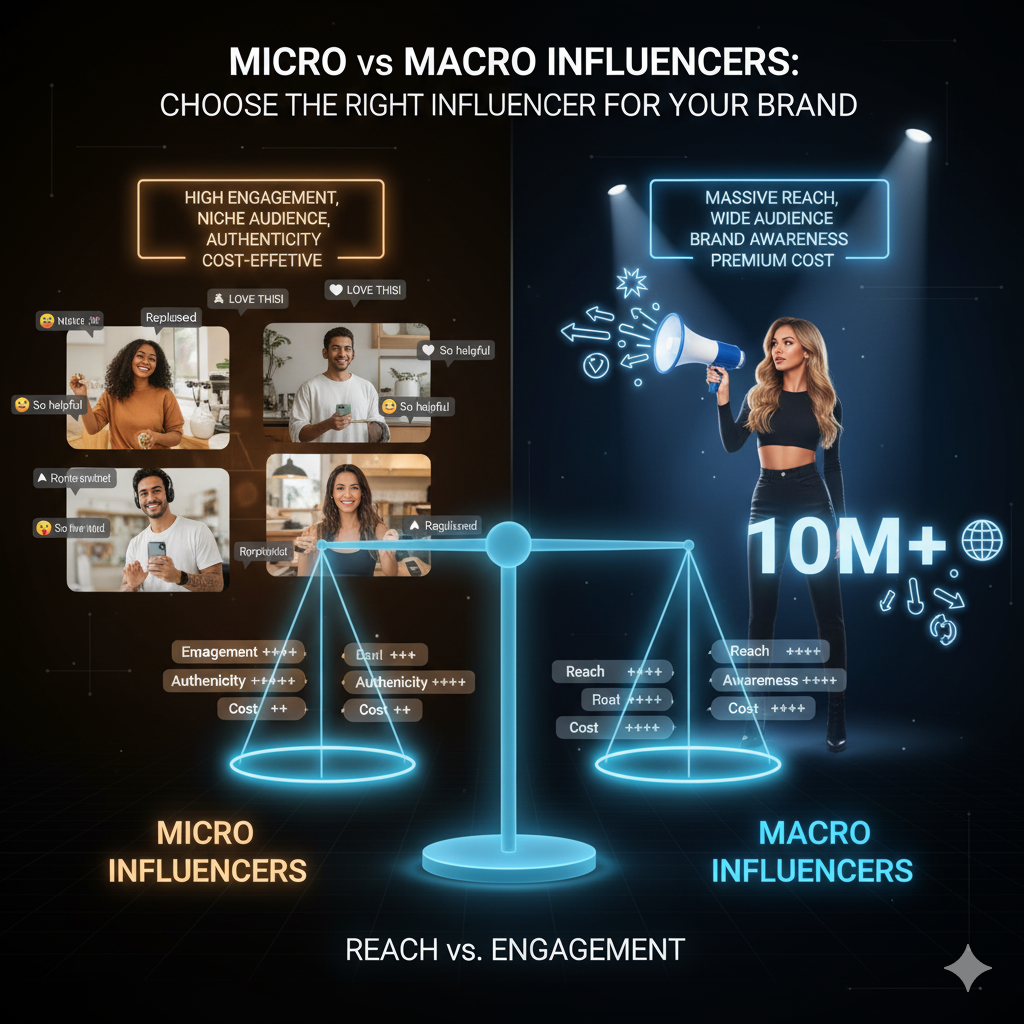
Micro vs. Macro Influencers - Which Influencer Type Delivers Better Results for Your Brand?
Introduction
Influencer marketing continues to dominate modern brand strategies, but one question always resurfaces: Should brands collaborate with micro influencers or macro influencers? Understanding the strengths, limitations, and best-use scenarios of each group is essential for maximizing campaign ROI.
This guide breaks down the differences and provides clear direction to help brands choose the right influencer tier for their goals.
1. What Are Micro and Macro Influencers?
Micro Influencers
- Typically have 10,000 – 100,000 followers
- Highly engaged niche communities
- Seen as more relatable and trustworthy
Macro Influencers
- Usually hold 100,000 – 1 million+ followers
- Broad audience reach
- Strong influence and high visibility across platforms
2. Key Differences Between Micro and Macro Influencers
✔ Reach
- Macro influencers provide massive exposure.
- Micro influencers offer smaller but more focused reach.
✔ Engagement
- Micro creators often enjoy higher engagement rates because their followers feel closer to them.
- Macro influencers may experience lower engagement due to broader, more diverse audiences.
✔ Cost
- Micro influencers are significantly more affordable, making them ideal for small or medium-sized brands.
- Macro influencers require a higher investment but deliver stronger brand awareness.
✔ Audience Trust & Authenticity
- Micro influencers = community-driven, authentic, conversational.
- Macro influencers = polished content, strong reputation, but may feel less personal.
3. When Should Brands Choose Micro Influencers?
Micro influencers are best for brands that want to:
- Build trust through authentic recommendations
- Reach specific niche markets
- Generate high engagement and conversions
- Run cost-effective campaigns with multiple creators
- Test new products with a focused audience
Common industries: skincare, local services, lifestyle, fitness, handmade products.
4. When Should Brands Choose Macro Influencers?
Macro influencers are ideal for brands that need:
- Large-scale visibility during product launches
- Brand positioning at a national or global level
- High-quality content with professional production
- A powerful brand ambassador for long-term campaigns
Best for industries like technology, luxury, fashion, entertainment, and consumer brands.
5. The Best Strategy: A Hybrid Approach
Today, many brands mix both types to maximize impact:
- Use macro influencers for reach and awareness
- Use micro influencers for engagement and conversions
This combination creates a more balanced, cost-efficient, and powerful influencer ecosystem.
6. Conclusion
There’s no “one-size-fits-all” answer. The best influencer tier depends on your budget, campaign objectives, and target audience.
- Want trust and conversions? → Choose Micro Influencers
- Want massive awareness and brand elevation? → Choose Macro Influencers
- Want the best results overall? → Use a hybrid mix
By understanding each group’s strengths, brands can unlock more effective social media strategies and enhance their overall marketing performance.
📌 Visit Us: STABLESMP.COM
Suggested Keywords:
- Stable SMP
- social media panel
- SMM services
- social media marketing
- SMM reseller panel
- buy social media services
- social media growth
- increase social media engagement
- social media management
- affordable SMM panel
Date:15/11/2025